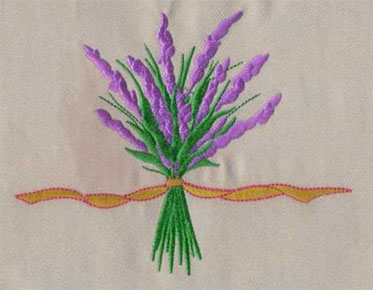Preserving Cultural Heritage Through Stitches: The Role of Digital Embroidery Archives
In the fast-paced digital age, where technology evolves at an unprecedented rate, there is a growing awareness of the need to preserve and celebrate traditional art forms. Embroidery, with its rich history and cultural significance, is no exception. As we navigate the realms of digitization, a new frontier emerges – the preservation of traditional embroidery designs through digital archives. In this exploration, we delve into the profound impact of digitizing on the preservation of cultural heritage, celebrating the stitches that tell stories of generations past.
Unraveling the Threads of
Tradition
Embroidery, a craft
that involves decorating fabric with needle and thread, has been an integral
part of various cultures for centuries. From the intricate patterns of Chinese
silk embroidery to the vibrant hues of Mexican Otomi stitching, these
traditional designs encapsulate the essence of cultural identity, history, and
craftsmanship.
However, the delicate nature of embroidered textiles makes them susceptible to wear, tear, and the passage of time. In the face of these challenges, the art of digitizing has emerged as a powerful tool for preserving and immortalizing these unique expressions of culture.
The Digital Tapestry: How
Digitizing Works
Digitizing embroidery involves converting traditional stitch patterns into digital formats that can be read and interpreted by embroidery machines. This process requires meticulous attention to detail, as each stitch, color, and nuance must be accurately translated into a digital language. The result is a digital file that serves as a blueprint for embroidery machines to recreate the design on fabric.
The Impact on Cultural
Preservation
1. Preserving Fragile Artifacts
Traditional embroidered textiles are often
delicate artifacts that may be too fragile to be displayed or handled
regularly. Digitization provides a means to create replicas that can be
showcased in museums, preserving the original pieces for future generations.
2. Ensuring Accessibility
Digital archives democratize access to
traditional embroidery designs. Researchers, artists, and enthusiasts from
around the world can explore and study these intricate patterns without
physically visiting distant archives or handling fragile textiles.
3. Cultural Exchange and Collaboration
Digitized embroidery designs facilitate
cross-cultural collaborations. Artists can seamlessly integrate traditional
patterns from different cultures into their work, fostering a global dialogue
that transcends geographical boundaries.
4. Educational Resources
Digital archives serve as invaluable educational resources. Schools, universities, and cultural institutions can utilize these archives to teach the history and techniques of traditional embroidery, ensuring that the knowledge is passed down to future generations.
Challenges and Considerations
While the digitization of embroidery brings forth numerous benefits, it is not without challenges. Here are some considerations in navigating this intersection of tradition and technology:
1.
Maintaining Authenticity
Digitizing traditional embroidery designs
requires a nuanced understanding of the cultural and historical context.
Designers must strive to maintain the authenticity of each stitch, color, and
motif to ensure that the digitized version accurately reflects the original
cultural expression.
2. Ethical Considerations
When digitizing culturally
significant designs, it is crucial to approach the process with sensitivity and
respect. Collaborating with local communities and obtaining proper permissions
is essential to avoid appropriation and uphold ethical standards.
3. Technology Obsolescence
The rapid evolution of technology poses a challenge to the long-term preservation of digital archives. Ensuring that digitized designs remain accessible across different platforms and software versions is essential for their continued relevance.
Case Studies in Digital
Embroidery Archives
1. The Virtual Embroidery Museum (VEM)
The Virtual Embroidery Museum is a pioneering
initiative that seeks to create a comprehensive digital archive of embroidered
textiles from around the world. By collaborating with museums, cultural
institutions, and artisans, VEM aims to digitize and catalog a diverse range of
embroidery traditions.
2. Digital Repositories in Cultural Institutions
Many cultural institutions, such as the Smithsonian and the Victoria and Albert Museum, have embraced digitization to preserve and share their extensive embroidery collections. These digital repositories allow users to explore high-resolution images of embroidered artifacts and gain insights into their cultural contexts.
Looking Ahead: The Future of
Digital Embroidery Archives
As technology continues to advance, the possibilities for preserving traditional embroidery designs through digitization are boundless. Here are some directions in which the field may evolve:
1.
Interactive Virtual Exhibitions
Imagine stepping into a virtual space where
digitized embroidery designs come to life. Interactive virtual exhibitions
could provide a dynamic and immersive way to experience the beauty and cultural
significance of traditional stitches.
2. Augmented Reality (AR) Experiences
AR applications could enable users to
superimpose digitized embroidery designs onto their surroundings, allowing for a
personalized and interactive exploration of cultural heritage in everyday life.
3. AI-Enhanced Preservation
Artificial intelligence may play a role in
enhancing the accuracy and efficiency of digitization. Machine learning
algorithms could assist in recognizing and preserving intricate details,
ensuring a faithful representation of traditional embroidery.
4. Global Collaborative Platforms
The future may see the emergence of global collaborative platforms that connect artists, designers, and cultural enthusiasts. These platforms could facilitate the exchange of digitized embroidery designs, fostering a worldwide community dedicated to preserving and celebrating cultural heritage.
Conclusion: Weaving the Digital
and the Traditional
In the delicate
threads of tradition, the digital realm weaves a tapestry of preservation and
innovation. Digital embroidery archives not only safeguard cultural heritage
but also open new avenues for exploration, collaboration, and appreciation. As
we embark on this journey of digitizing stitches from the past, we embark on a
path where the rich tapestry of cultural identity is not only preserved but
also interwoven with the possibilities of the future.



